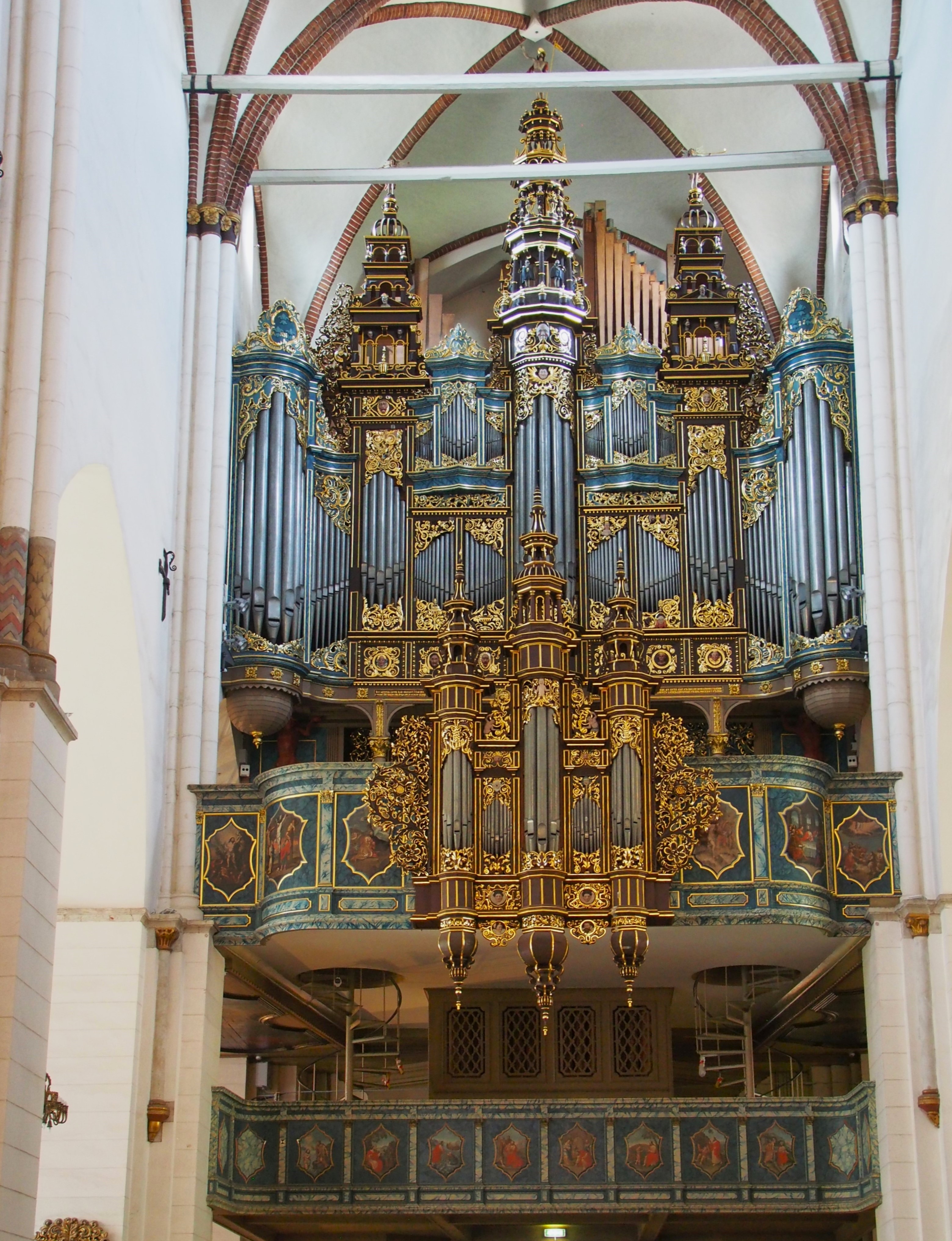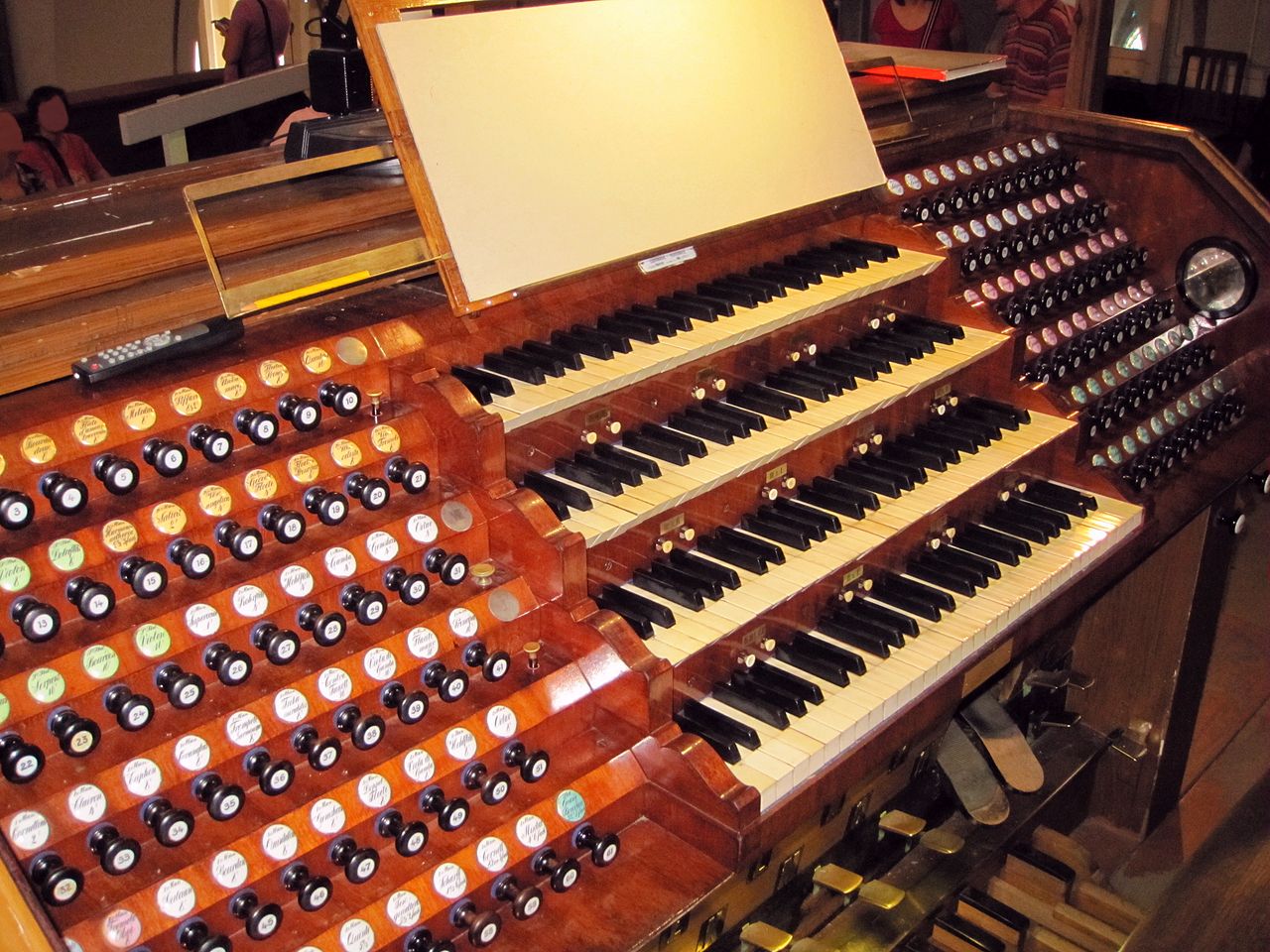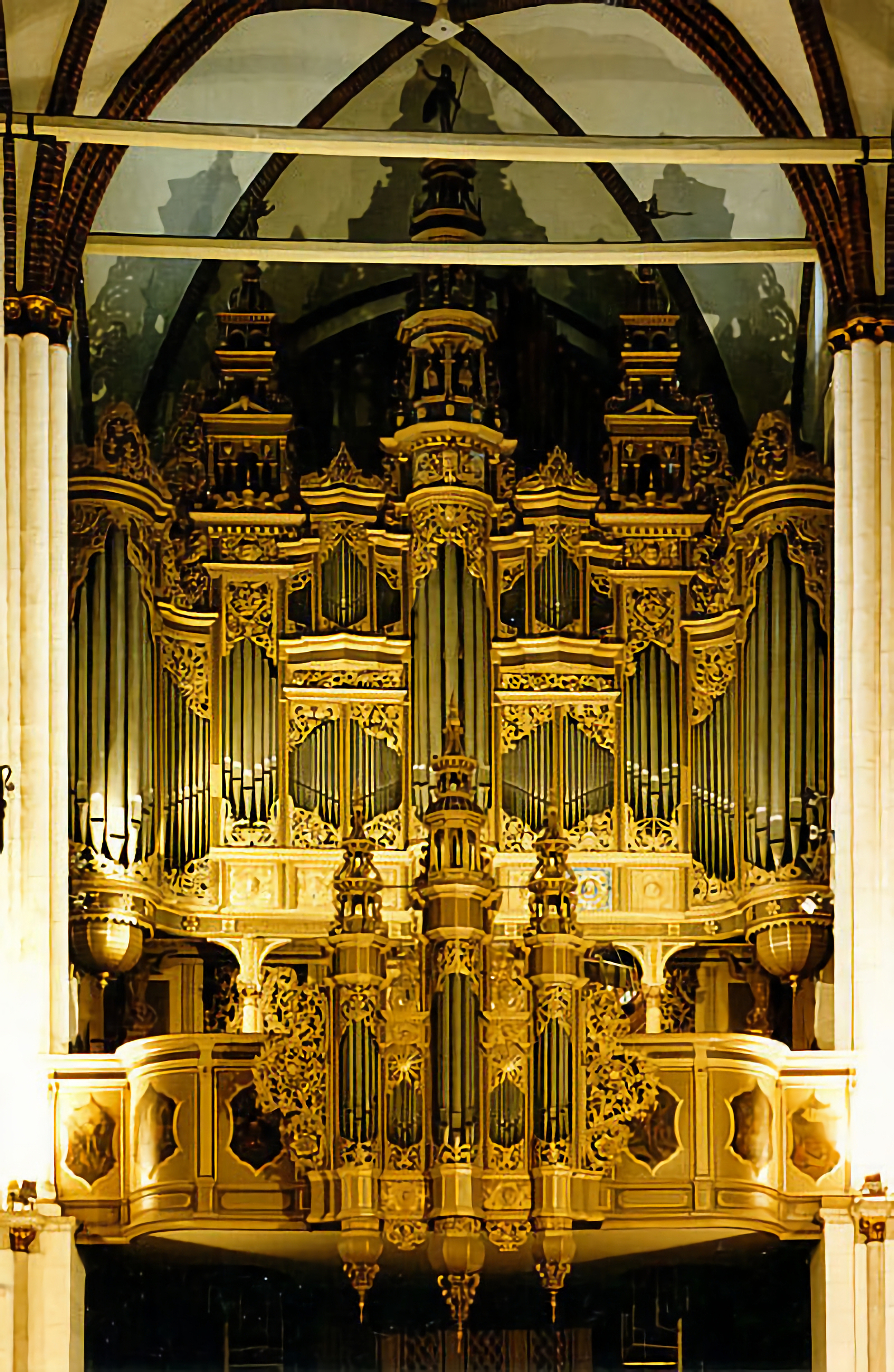Riga, Dome Cathedral
| Builder | Walcker |
|---|---|
| Year | ca. 1883 |
| Period/Style | Romantic |
| Stops | 124 |
| Keyboards | 4+P |
| Keyaction | tracker/mechanical |
Dome Pipe Organ (Latvian: Doma ērģeles), the second largest pipe organ in Latvia, is located in Riga Cathedral.
The first known Riga Cathedral organ was the largest in the world, but it was lost in 1547 during a fire. In the 16th century, the Cathedral Church built a new organ, which sounded for 280 years. Jacob Raab made out of the damaged organ's remains a prospect in mannerism style with some baroque elements complemented latter by other masters. Today the vocal organ is more than a century old; it is built by the German firm E.F. Walcker & Sons in Ludwigsburg in 1882-83 and it was inaugurated on January 31, 1884. In 1983 the organ was reconstructed by Flentrop Orgelbouw of Zaandam, Netherlands, so it retained its distinctive sound and look. During the reconstruction the organ was completely dismantled and then reassembled, the second console was restored and later added three stops.
The instrument is playable from two consoles. Its main console is located at the upper gallery and has 4 manuals and a pedal. The second console is on the lower gallery and it duplicates the fourth manual of the main console. The organ has 124 stops, which sound from 6,718 pipes arranged on 26 wind chests. The longest pipe is about 10 meters long, the shortest one is only 13 mm. Pipe diameters are from 50 cm to 4 mm. The materials used in the pipes include pine, fir, maple, oak, beech, and pear and different metal alloys. There are 116 voices, 144 ranks; 18 combinations and General Crescendo.
The first known Riga Cathedral organ was the largest in the world, but it was lost in 1547 during a fire. In the 16th century, the Cathedral Church built a new organ, which sounded for 280 years. Jacob Raab made out of the damaged organ's remains a prospect in mannerism style with some baroque elements complemented latter by other masters. Today the vocal organ is more than a century old; it is built by the German firm E.F. Walcker & Sons in Ludwigsburg in 1882-83 and it was inaugurated on January 31, 1884. In 1983 the organ was reconstructed by Flentrop Orgelbouw of Zaandam, Netherlands, so it retained its distinctive sound and look. During the reconstruction the organ was completely dismantled and then reassembled, the second console was restored and later added three stops.
The instrument is playable from two consoles. Its main console is located at the upper gallery and has 4 manuals and a pedal. The second console is on the lower gallery and it duplicates the fourth manual of the main console. The organ has 124 stops, which sound from 6,718 pipes arranged on 26 wind chests. The longest pipe is about 10 meters long, the shortest one is only 13 mm. Pipe diameters are from 50 cm to 4 mm. The materials used in the pipes include pine, fir, maple, oak, beech, and pear and different metal alloys. There are 116 voices, 144 ranks; 18 combinations and General Crescendo.
| I. Manual | II. Manual | III. Manual | IV. Manual | Pedal |
|---|---|---|---|---|
| Principal 16′ | Geigenprincipal 16′ | Salicional 16′ | Quintatön 16′ | Principal 32′ |
| Flauto major 16′ | Bourdon 16′ | Lieblich Gedeckt 16′ | Flötenprincipal 8′ | Grand Bourdon 32' |
| Viola di Gamba 16′ | Principal 8′ | Geigenprincipal 8′ | Unda maris 8′ | Octav 16′ |
| Octav 8′ | Fugara 8′ | Viola d’amour 8′ | Melodica 8′ | Violonbass 16′ |
| Hohlflöte 8′ | Spitzflöte 8′ | Wienerflöte 8′ | Flûte traversière 8′ | Contraviolonbass 16′ |
| Viola di Gamba 8′ | Rohrflöte 8′ | Gedeckt 8′ | Bourdon doux 8′ | Subbass 16′ |
| Doppelflöte 8′ | Concertflöte 8′ | Salicional 8′ | Äoline 8′ | Flötenbass 16′ |
| Gemshorn 8′ | Liebl. Gedeckt 8′ | Harmonika 8′ | Voix céleste 8′ | Gedecktbass 16′ |
| Quintatön 8′ | Viola di Alta 8′ | Bourdon d’echo 8′ | Viola tremolo 8′ | Quint 10 2/3′ |
| Bourdon 8′ | Dolce 8′ | Bifra 8′+4′ (2) | Piffaro 8′+2′ | Octavbass 8′ |
| Dulciana 8′ | Principal 4′ | Geigenprincipal 4′ | Flötenprincipal 4′ | Hohlflötenbass 8′ |
| Quinte 5 1/3' | Fugara 4′ | Spitzflöte 4′ | Gedecktflöte 4′ | Gedecktbass 8′ |
| Octav 4′ | Salicet 4′ | Traversflöte 4′ | Vox angelica 4′ | Violoncello 8′ |
| Gemshorn 4′ | Flauto dolce 4′ | Dolce 4′ | Salicet 2′ | Terz 6 2/5′ |
| Gamba 4′ | Quinte 2 2/3′ | Piccolo 2′ | Harmonia ätheria III 2 2/3′ | Octavbass 4′ |
| Hohlflöte 4′ | Superoctav 2′ | Mixtur IV 2 2/3′ | Trompete 8′ | Hohlflöte 4′ |
| Rohrflöte 4′ | Waldflöte 2′ | Vox humana 8′ | Physharmonika 8′ | Octav 2′ |
| Terz 3 1/5′ | Terz 1 3/5′ | Basson 8′ | Sesquialtera II 102/3' | |
| Quinte 2 2/3′ | Sexquialtera II 22/3' | Clarinette 8′ | Mixtur V 5 1/3′ | |
| Octav 2′ | Cornet V 8′ | Bombardon 32′ | ||
| Superoctav 1′ | Mixtur V 2 2/3′ | Posaune 16′ | ||
| Sexquialtera II 51/3' | Äolodicon 16′ | Trompete 8′ | ||
| Cornet V 8′ | Ophykleide 8′ | Corno 4′ | ||
| Mixtur VI 4′ | Fagott-Oboe 8′ | Violon 16′ | ||
| Scharff IV 1 1/3′ | Oboe 4′ | Bourdon 16′ | ||
| Contrafagott 16′ | Dolceflöte 8′ | |||
| Tuba mirabilis 8′ | Violon 8′ | |||
| Trompette harm. 8′ | Viola 4′ | |||
| Cor anglais 8′ | Flautino 2′ | |||
| Euphon 8′ | Serpent 16′ | |||
| Clairon 4′ | Bassethorn 8′ | |||
| Cornettino 2' |
https://en.wikipedia.org/wiki/Riga_Cathedral_pipe_organ
https://web.archive.org/web/20240128045431/https://www.magle.dk/music-forums/threads/the-walcker-organ-in-riga-cathedral.801/
https://organindex.de/index.php?title=Riga,_Dom
https://web.archive.org/web/20240128045431/https://www.magle.dk/music-forums/threads/the-walcker-organ-in-riga-cathedral.801/
https://organindex.de/index.php?title=Riga,_Dom
 Pipe Organ Map
Pipe Organ Map

